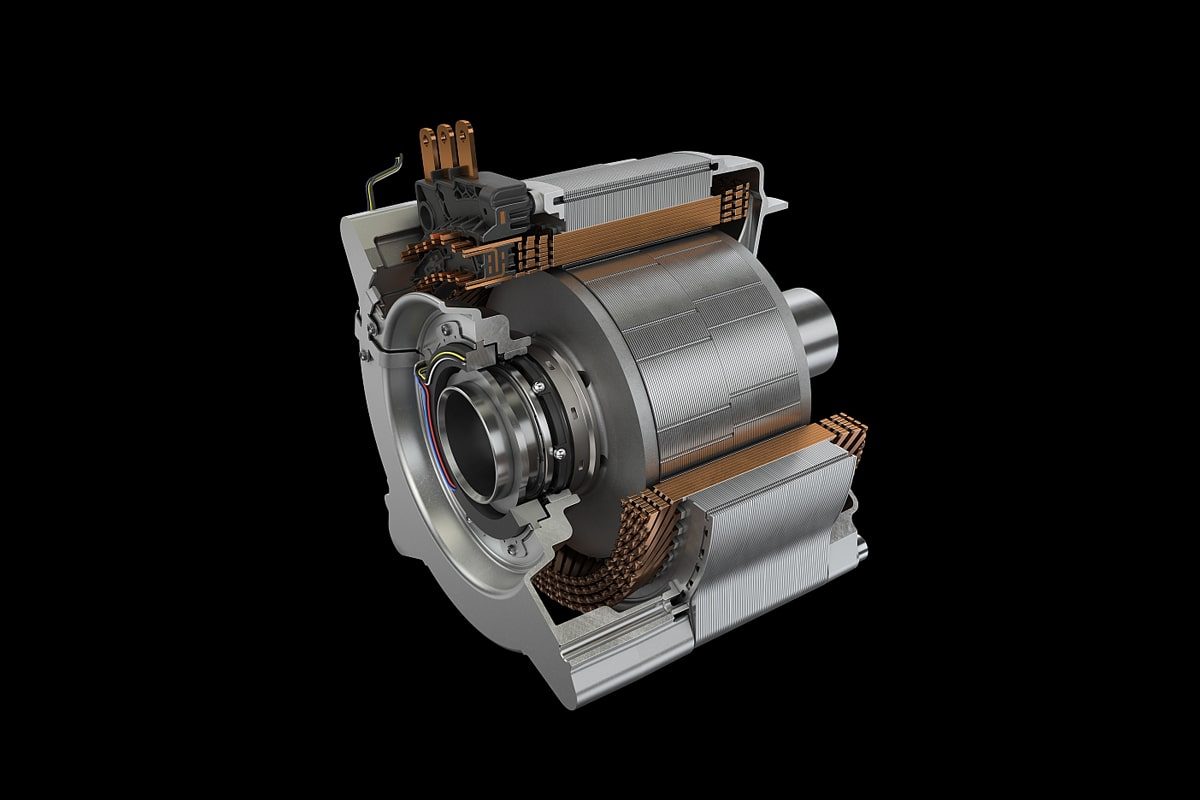Researchers develop approaches to extend service life of electric motors
In the REASSERT project, a team led by Schaeffler is thus developing methods to refurbish electric motors and reuse them in vehicles. The project involves the Fraunhofer Institute IPA, the Karlsruhe Institute of Technology KIT, BRIGHT Testing GmbH, iFAKT GmbH and Riebesam GmbH & Co. KG. The project is funded by the German Federal Ministry for Economic Affairs and Climate Protection.
“So far, there has been a lack of sustainable value retention strategies for remanufacturing and recycling electric motors as part of a modern circular economy,” says the Fraunhofer Institute IPA in a press release outlining the current situation. However, the electrification of the powertrain is progressing steadily. “The electric motors used contain valuable raw materials such as copper as well as rare earth metals like neodymium, where China holds a quasi-monopoly, and which cannot be recovered with current recycling methods. Hence, extending the usage phase of the motors is increasingly important.”
In the REASSERT project, the participants focus on the value retention strategies of “reuse, repair, remanufacture and raw material recycling.” They say these are critical elements for a circular economy that makes it possible to reduce the consumption of natural resources and minimise the amount of waste.
At present, the shredded and contaminated material from electric motors can be recycled but can no longer be used in motors. In addition, individual components and assemblies are destroyed. Therefore, according to the project participants, raw material recycling should be “the last resort” for recycling and replaced by the high-quality value preservation strategies of reuse, repair, remanufacturing and material recycling.
“We want to establish a closed-loop system in which valuable resources are reused to eliminate dependency on raw material imports and to minimise raw material extraction,” says Julian Große Erdmann, a scientist at the Fraunhofer Institute for Manufacturing Engineering and Automation IPA in Bayreuth. The project partners define reuse as reusing the complete engine in a second use, and repair as replacing defective components and assemblies. In remanufacturing, all components are removed, cleaned, refurbished and reused.
“With these strategies, fewer raw materials like rare earths, copper, and others are needed, perhaps only for spare parts,” explains Große Erdmann. With material recycling, the project partners plan to dismantle the engine according to type before shredding. The participants analyse which value retention strategies should be used using reference engines for the passenger car sector.
A complete process chain is to be created as part of the project, with each station receiving its own demonstrator or test stand – from the incoming inspection for the classification of the motor to disassembly, demagnetisation, cleaning, diagnosis of the components, reconditioning through to reassembly and end-of-line testing, where the functionality of the motor is examined. “For instance, during this process, a motor housing with minor wear might be classified for reuse and, if necessary, reconditioned using machining processes to ensure functionality. Depending on the chosen value preservation strategy, different process steps and chains are involved, so the effort for reconditioning may vary,” explains the engineer.
One of the challenges identified by the participants is the disassembly and reuse of the magnetic materials used in the motors: “A rotor with permanent magnets is difficult to disassemble into its components even in a manual disassembly process due to the coating and bonding of the magnets. Here, the goal is to establish non-destructive disassembly methods.”
The team wants to use an AI decision tool to be developed in the project to help them choose the best value retention strategy. The knowledge gathered in the project will ultimately be used to design new electric motors. According to the Fraunhofer Institute, the aim is to develop a prototype motor for the circular economy that can be easily dismantled and to which the four aforementioned value retention strategies can be easily applied.





1 Comment